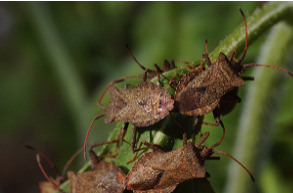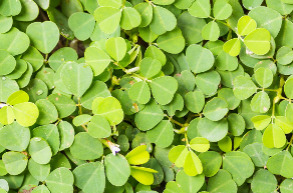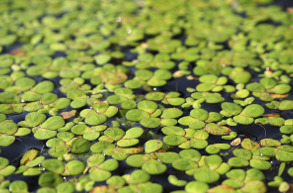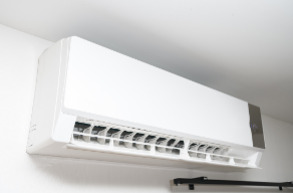Carpetgrass Control
Most Effective Products
Carpetgrass Control: How To Get Rid of Carpetgrass
Carpetgrass is a warm-season perennial grass that is common in the southeastern part of the United States, especially in poorly drained soils that are moist on a constant basis. Carpetgrass gets its name from the carpet-like mats the grass forms on a lawn were established. It produces unsightly weeds that resemble crabgrass and the lawn can appear coarse and unmown.
Carpetgrass seed stalks have the ability to rapidly grow to a height of about a foot and bear unattractive seed heads that give the lawn a weedy appearance which can be tough to mow down. Carpetgrass also enjoys areas with full sun and can survive and even thrive in areas where the soils are wet and acidic.
If you're dealing with a carpetgrass outbreak, our easy DIY treatment guide will show you exactly how to eliminate the crabgrass for good. Follow the step-by-step instructions below using our recommended products and you are guaranteed results.
Identification

Before you can move forward with a treatment program, you need to properly identify Carpetgrass by knowing what it looks like. Misidentification of Carpetgrass can lead to you using the wrong herbicides, which can cost you time and money. Here are some traits to look out for when identifying Carpetgrass:
- Carpetgrass can be easily identified by its pale green or yellowish-green color. It is one of the first grasses to turn brown when temperatures cool and the last to green up in spring.
- It is generally described as having leaves with blunt and rounded ends, flat stolons, and tall seed stalks with two branches at the tip. The leaf sheaths are also recognizable because of the fine hairs along the outer edge.
- Carpetgrass is often confused or mistaken for Centipedegrass because of their similar characteristics. Carpetgrass and Centipedegrass share similar traits except that carpetgrass produces a crabgrass-like seedhead, and centipedegrass has hairs along the edges of the leaves. The grass forms a thick mat and gives carpet-like coverage wherever established.
Use the description and the image above to confirm whether you are dealing with Carpetgrass. If you are having trouble identifying which kind of weed you are encountering in your yard, contact us and we will help to identify the weed for you.
Inspection

After you have confirmed that the weed you are encountering is Carpetgrass, you can then move forward with inspection. During this phase, you will need to pinpoint the areas where Carpetgrass is concentrated and what the conditions of the area are. This will help you to determine where to focus your herbicide treatment.
Where to Inspect
Scan your landscape to see how severe of a Carpetgrass problem you have. This will help you to see how much product you may need and where you will focus your application.
When Carpetgrass has established on a lawn it may be because you have a moisture issue since Carpetgrass adapts well to moist soils which are also sandy. Carpetgrass also thrives in areas that have not been fertilized well or is poorly maintained.
What To Look For
Carpetgrass is a warm-season creeping perennial grassy weed which forms a sort of matted carpet-like appearance, hence their name, so if it's on your property, it'll be hard to miss.
Treatment
Please be sure that when handling any type of herbicide, you are properly protecting your skin and eyes with safety equipment. Goggles, gloves and long-sleeved clothing should suffice.
We recommend using Celsius WG. This professional-quality herbicide will deal damage to the leaves on the plant and hinder the development of the root system. The best time to apply Celsius is early on in the summer when the plant is young and actively growing as this is the time when they are most vulnerable to herbicides.
Step 1: Mix and Apply Celsius WG

Celsius WG is a post-emergent herbicide that comes in the form of water-dispersible granules and is great to use on St. Augustine grass, Bermudagrass and other labeled warm-season grasses to control perennial and broadleaf weeds.
Before mixing Celsius WG into your sprayer, determine how much Celsius WG you need by measuring the square footage of your target area (measure and calculate the length of your lawn x width).
For spot treatments, you can treat 1,000 sq. ft. by using a 0.085 of Celsius WG in 1 gallon of water. A good tool to use to aid with your herbicide application is mixing your selected herbicide with a surfactant like Nanotek Surfactant so that your application can stick to the Carpetgrass and not runoff. Mix the Celsius WG with water first and once it is well mixed, add the surfactant.
Step 2: Apply Celsius WG on Carpetgrass

Once the product is well-mixed in your sprayer, apply the product to the Carpetgrass using a fan nozzle setting to get a nice even coating.
Because of the weeds persistence, a repeated application may be necessary about 2 to 4 weeks after first application. Repeat treatment in these timed intervals until the Carpetgrass has died out. However, do not exceed 7.4 oz. of product per acre per year (365 days) for all applications.
Prevention

Once you have treated the Carpetgrass in your yard, you don't want it to make a return. The best defense against Carpetgrass is a thick lawn that is well fertilized and maintained. Here are some cultural practices you should implement as a preventative measure to keep Carpetgrass from coming back.
- Implement proper cultural lawn care maintenance practices such as watering, mowing and feeding to make your yard less conducive to Carpetgrass making a return and invading your yard.
- In gardens, mulching will greatly reduce or prevent Carpetgrass growth.
- Addressing soil moisture issues is especially vital. Water less frequently and fertilize well because Carpetgrass is unable to survive in dry soils and often grows where other grasses are not growing as well.
- As long as your desired grass is well nourished and you are keeping up with a regularly lawn maintenance schedule for your grass type, Carpetgrass will no longer be able to invade.
Key Takeaways
What is Carpetgrass?
- Carpetgrass is a warm-season perennial grassy weed that is known to grow and takeover in areas where there are moisture problems.
How to Get Rid of Carpetgrass
- We recommend using Celsius WG to remove Carpetgrass from your lawn. Apply to the Carpetgrass to the point of wet and reapply 2 to 4 weeks later to ensure it is sufficiently controlled.
Preventing Carpetgrass Reestablishment
- Prevent the reappearance of Carpetgrass with regular lawn care maintenance and addressing moisture and drainage issues on your lawn.























































































































































































































































































































































































































































































































